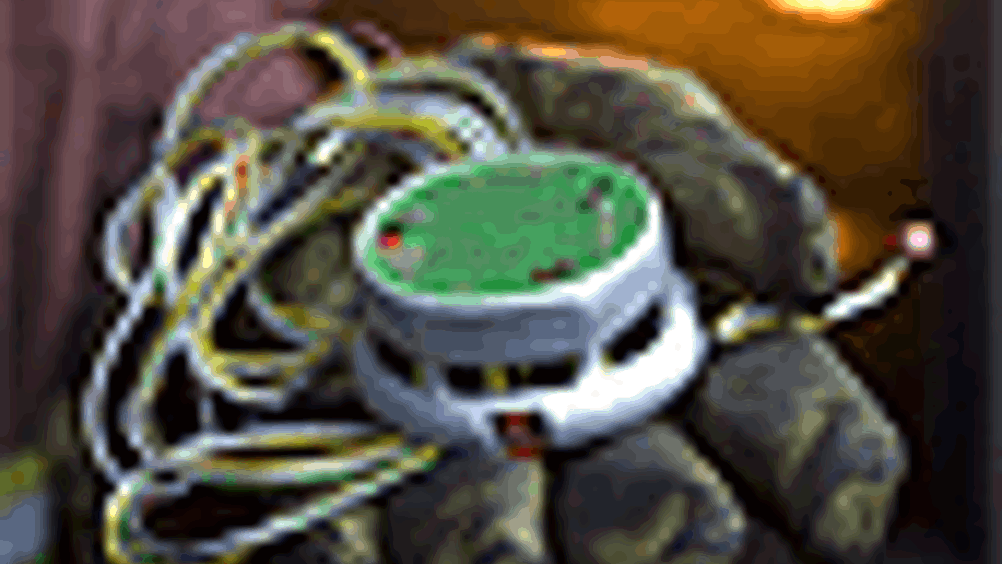Robots blaze a trail
An EU-funded project to develop swarms of palm-sized robots could protect firefighters in dangerous, smoke-filled buildings.

Two firefighters died when they were engulfed by smoke and lost their exit route while attending a blaze in London’s East End in 1992. The smoke was so thick it was impossible to find them and they died when their air ran out.
Now an EU-funded project to develop swarms of palm-sized intelligent robots could help protect firefighters in dangerous, smoke-filled buildings and prevent this happening again.
Over three years the researchers aim to develop two types of rescue robot — the Viewfinder and the Guardian.
A team of 16cm Viewfinder explorer robots would be the first to enter a building in the event of a fire and would assess the air for dangerous chemicals, structural soundness and locate the heart of the fire.
Remote operation
Jacques Penders, a senior research fellow at Sheffield Hallam University’s materials and engineering research institute, is leading the project. He said the Viewfinders would work in a team of three and be operated remotely by a firefighter from a safe distance.
‘Fire and rescue services want a means to access premises before they send in people,’ he said. ‘In the aftermath of an explosion you need to know it’s safe.’
Once inside the building the Viewfinder would be able to operate with a degree of autonomy to scan the building’s interior for possible danger. Equipped with a large array of chemical sensors it would also carry a range of cameras, including normal light and infrared imaging.
The robots would collect information about their surroundings then send it to the manned base station outside. The information would be processed on a screen and overlayed on a map of the area, allowing firefighters to plan a safe route.
After the first wave of Viewfinders, the Guardians would be sent in. They would operate in larger teams of about 30 individual robots and act as a wireless communications network. They will communicate between themselves and any firefighters in the building and build up an ad-hoc mobile network. They would distance themselves — like beacons — throughout the building, depending on the strength of the signal, to ensure constant contact.
‘As they carry their own base station it means they can be used anywhere. We are particularly thinking of warehouses filled with smoke where you will expect a lot of metal, so normal wireless communications will not work,’ said Penders.
As part of the research project the Guardians will be developed in two sizes, the wheeled, 16cm version and a 40x60cm prototype that moves on tracks.
Penders said firefighting teams would probably use a combination of the two sizes. He stressed that the robots are not designed to be used in rubble-strewn environments, but would be used to counter the effects of smoke.
Sense of touch
Once human firefighters enter the building it is intended that they will be guided along a safe path by the Guardians. The team is unsure what form the human-robot interface will take, but it likely that it will rely on the firefighter’s sense of touch.
‘One firefighter would be surrounded by 10-15 of these robots,’ said Penders. ‘Remember that visual and audio communication is hampered by breathing apparatus and the smoke so we are looking at a tactile interface of some sort attached to his body, so the robots could make clear to the firefighter where he is and which way he should move.’
The project is a pan-European effort. The small Guardians will be made by Swiss robot manufacturer K-Team, while Spanish robotics experts Robotnik will develop the larger ones. The Viewfinders will come from the Polish institute for robotics.
Penders’ team is working alongside the South Yorkshire Fire and Rescue Service to validate their findings and test early prototypes.
He admitted that the project is extremely ambitious. ‘It’s high-risk research, but the rewards could be huge,’ he said.
Register now to continue reading
Thanks for visiting The Engineer. You’ve now reached your monthly limit of news stories. Register for free to unlock unlimited access to all of our news coverage, as well as premium content including opinion, in-depth features and special reports.
Benefits of registering
-
In-depth insights and coverage of key emerging trends
-
Unrestricted access to special reports throughout the year
-
Daily technology news delivered straight to your inbox










Water Sector Talent Exodus Could Cripple The Sector
Well let´s do a little experiment. My last (10.4.25) half-yearly water/waste water bill from Severn Trent was £98.29. How much does not-for-profit Dŵr...